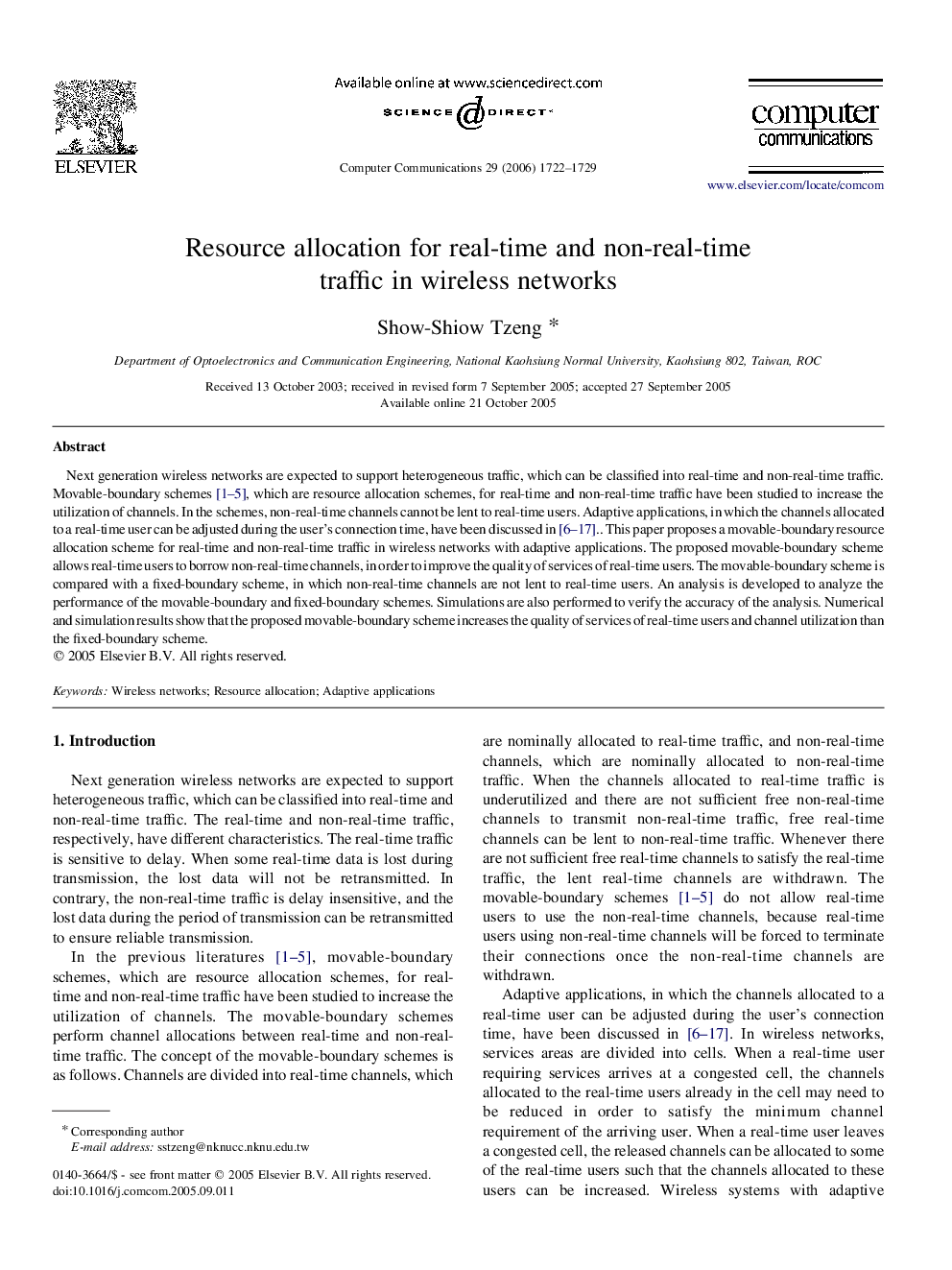| Article ID | Journal | Published Year | Pages | File Type |
|---|---|---|---|---|
| 448901 | Computer Communications | 2006 | 8 Pages |
Next generation wireless networks are expected to support heterogeneous traffic, which can be classified into real-time and non-real-time traffic. Movable-boundary schemes [1], [2], [3], [4] and [5], which are resource allocation schemes, for real-time and non-real-time traffic have been studied to increase the utilization of channels. In the schemes, non-real-time channels cannot be lent to real-time users. Adaptive applications, in which the channels allocated to a real-time user can be adjusted during the user's connection time, have been discussed in [6], [7], [8], [9], [10], [11], [12], [13], [14], [15], [16] and [17].. This paper proposes a movable-boundary resource allocation scheme for real-time and non-real-time traffic in wireless networks with adaptive applications. The proposed movable-boundary scheme allows real-time users to borrow non-real-time channels, in order to improve the quality of services of real-time users. The movable-boundary scheme is compared with a fixed-boundary scheme, in which non-real-time channels are not lent to real-time users. An analysis is developed to analyze the performance of the movable-boundary and fixed-boundary schemes. Simulations are also performed to verify the accuracy of the analysis. Numerical and simulation results show that the proposed movable-boundary scheme increases the quality of services of real-time users and channel utilization than the fixed-boundary scheme.
